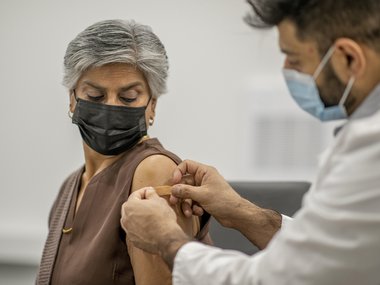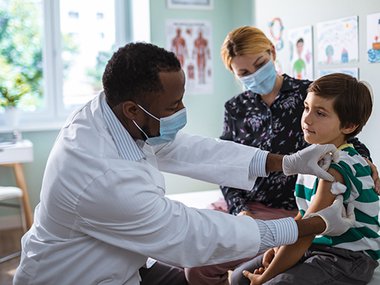Question Your World: How Did The COVID Vaccine Get Made So Quickly?
As you may have heard, COVID-19 cases are on the rise again, largely due to the very contagious delta variant. Whether vaccinated or not, some folks continue to be curious about the coronavirus vaccine.
In a recent poll of Virginians, confidence in the vaccine is up, however 65% of unvaccinated people still have concerns over the short time in which this vaccine was created. So, how did this vaccine get made so quickly? We dive in to the four phases of vaccine development to investigate what makes this one different.
It’s true that the COVID-19 vaccine was developed quickly, but this is a case of preparation meeting opportunity and resulting in good luck for us all!
This vaccine was developed so much faster than other vaccines and drugs due to drastic time savings at every step. Let’s break it down:
The Research Phase: Savings of 3-5 years
- Research was already underway by several companies and universities studying other coronaviruses, which have been known for 20+ years.
- Also, the genomic sequence of COVID-19 was worked out quickly and shared publicly. That’s the kind of information that’s usually a trade secret and results in delays for anyone who doesn’t have it.
- Research costs money, and usually a company has to make a business case for why investors should fund it … which takes time. During a pandemic the demand is already there so there's no need to spend time drumming up business.
The Pre-Clinical Phase: Savings of 2-3 years
- Scientists need to conduct tests before putting the vaccine into humans, trying it out in test tubes and experimental animal species. Usually that’s done one at a time to make sure each test works before moving on to the next. This justifies each additional step so that companies don’t invest further in a drug that fails a step.
- Since there was ample funding in the development of the COVID-19 vaccine due to purchase guarantees, companies could do all the tests at the same time.
The Clinical Phase: Savings of 2-3 years
- Next, scientists have to test the drug in humans who volunteer in three phases. The tricky and time-consuming part is usually recruiting people to volunteer. Not in a pandemic!
- Typically a company waits until a drug has passed phase 1 before lining up all the researchers, clinicians and patients for phase 2 trials in order to save money in case the drug doesn’t pass phase 1. With COVID-19 vaccines, since money wasn’t an issue, companies could get everything they needed set up and in place so that they could launch the next phase immediately on passing a phase.
Regulatory Phase: Savings of 1.5-2 years
- Normally regulators (like the U.S. Food and Drug Administration) review information on a drug after all the information is available. In this case, they reviewed each piece of new information as it came along instead of waiting until it was all in one complete report. This allowed the FDA to quickly confirm that each drug has met all standards for safety, effectiveness and manufacturing quality.
All together, the preparation work adds up to between 8.5 and 13 years of savings in a process that usually takes 10-15 years!


